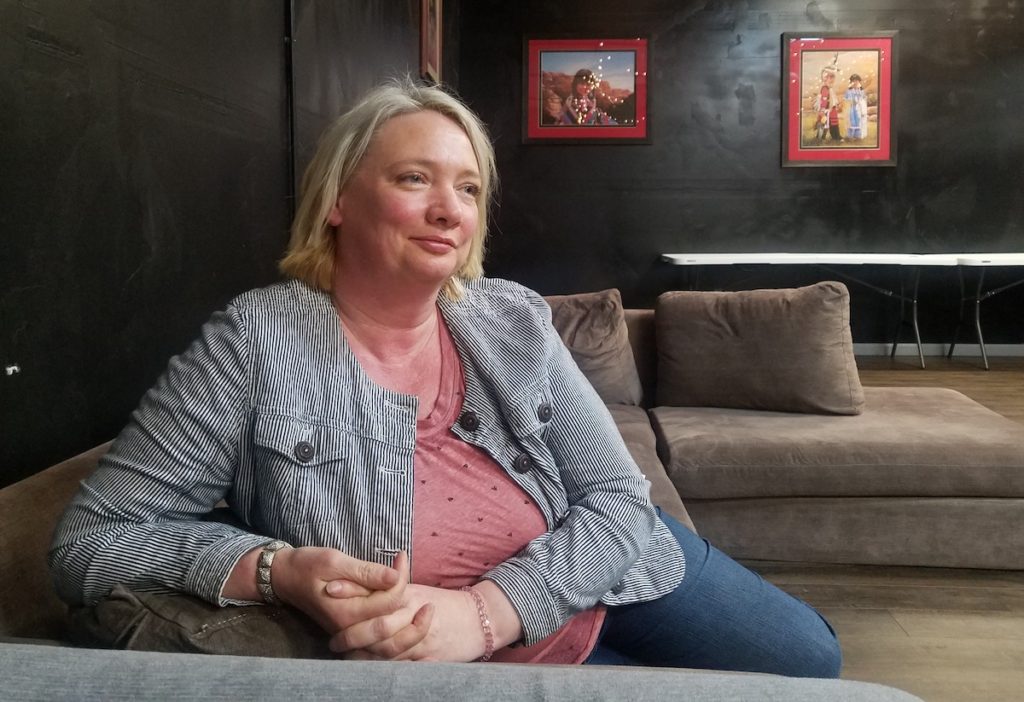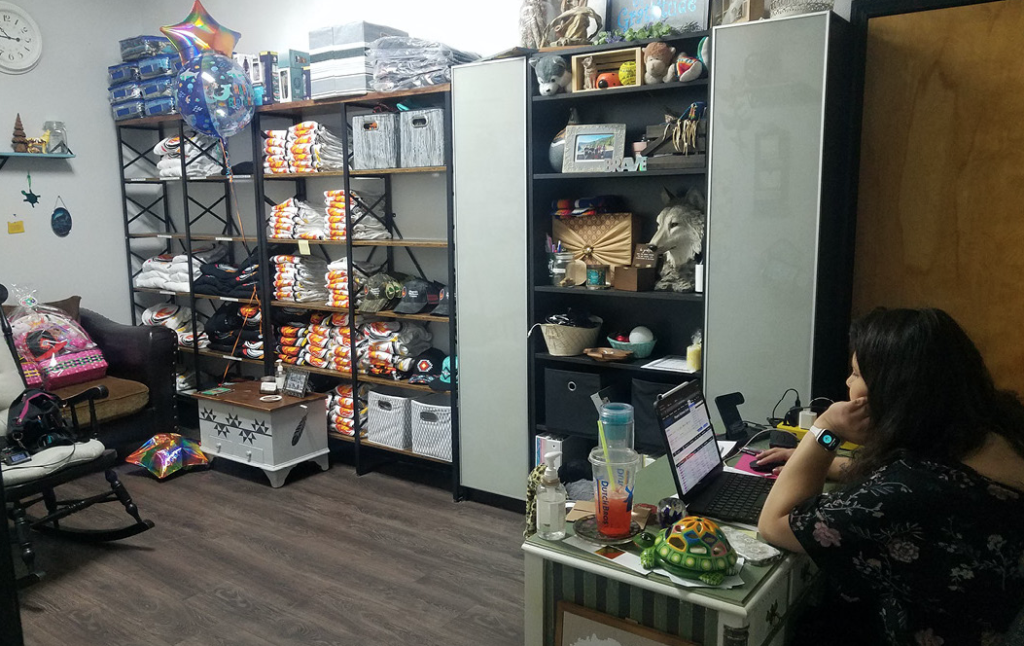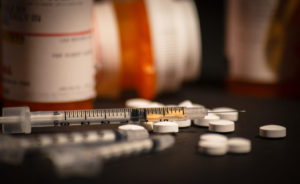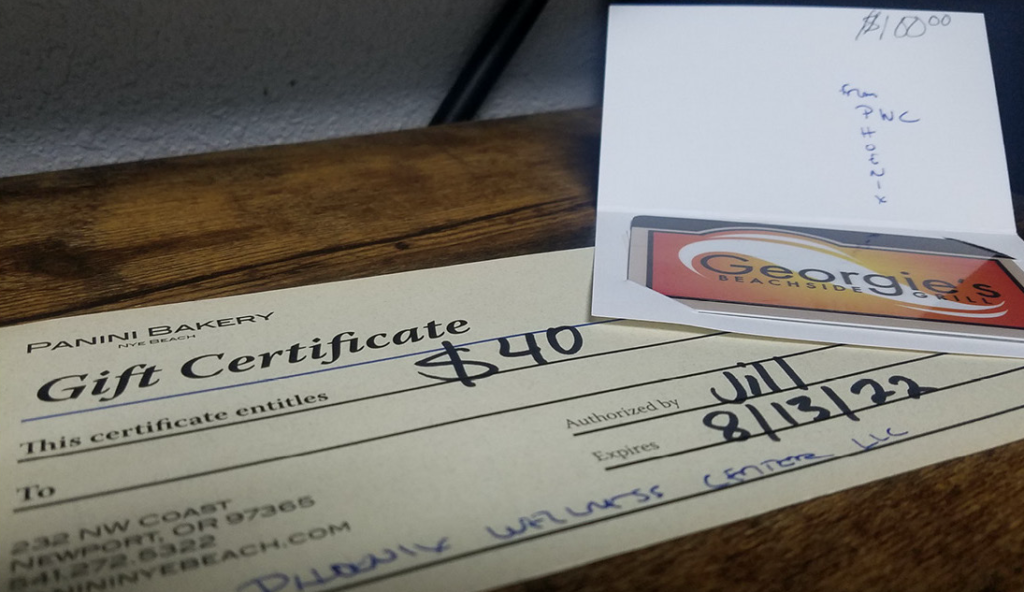
By EMILY GREEN/The Lund Report
NEWPORT — For most of her adult life, Crystal Johnson was, as she puts it, a minivan-driving soccer mom.
A life-long Newport resident, the affable 49-year-old thought the meth addiction she battled in her early 20s was behind her. But when the youngest of her four children was in high school, a family crisis sent her reeling. Knowing meth would take the pain away, she dove back in.
The only way to explain how she went from being a homemaker one day to putting needles in her arm the next was that her “brain broke,” she said.
“I felt bad, and I wanted to feel better — and also at the same time just feel worse,” she says.
Meth can be one of the toughest addictions to treat, but research shows that people who use meth are more likely to stick with treatment programs when they receive rewards for staying drug free. It’s a method called “contingency management,” and in Oregon, it’s about to get a lot more funding.
There is widespread expert consensus that giving patients rewards for abstaining is the most effective evidence-based treatment for meth use available, but the method has not been used much in the U.S.
The idea can be controversial – not everyone is easily convinced that giving gift cards or other rewards to people struggling with meth use is a great plan. While these moral objections persist, the primary obstacle has been funding.
But with the passage of Oregon’s Ballot Measure 110, which decriminalized small amounts of hard drugs and diverted hundreds of millions of marijuana tax dollars to treatment and recovery services, Oregon now has a sustainable funding stream.
And, providers across the state have taken notice.
More than $500,000 in requests for incentives are included in 20 grant applications approved for funding. Additional requests will likely stack up as the review process is ongoing. The dollar amount of Oregon’s total investment in such programs won’t be clear until the Oregon Health Authority issues the contracts later this year.
The new funding makes Oregon a leader in deploying the approach — and it makes the state a testing ground. Researchers want to know if Oregon’s rewards-based programs will achieve the same success that studies have.

Incentives work for Johnson
Today, Johnson is well into recovery from her meth and heroin use at the Phoenix Wellness Center, a 2-year-old outpatient drug and alcohol treatment clinic in Newport that incorporates a reward system into its work.
For the center’s four co-owners, the approach was a no-brainer. As members of the Siletz Tribe, they worked at tribal agencies providing treatment services before founding their own facility along U.S. Highway 101. Offering incentives is a common tribal practice that they’ve extended to anyone in treatment.
“It’s about using people’s internal motivations and rewarding them for making these achievements or making steps towards progress and change,” said co-owner Ashliegh Ramirez.
In the center’s pristine lobby, a large painting of a Phoenix – a mythical bird that spontaneously bursts into flame and dies, only to be reborn from the ashes – with its wings spread wide hangs behind the reception desk. Down in the basement, Ramirez’s office is lined with shelves stacked high with rewards for clients — everything from bandanas with tribal designs and new wallets to baseball hats and duffle bags.
In its most basic sense, contingency management means using positive or negative reinforcement; in other words, the reward is contingent on a desired behavior. In drug and alcohol treatment settings, the phrase typically describes a program that rewards drug-free urine samples or sustained engagement in treatment with gift cards or money.
The federal government recently recognized this approach as “the only treatment with significant evidence of effectiveness” in its updated manual on protocols for treating stimulant use disorder.

In study after study, contingency management has resulted in a 40 percent to 50 percent rate of abstinence in meth users, according to Dr. Todd Korthuis, the head of addiction medicine at Oregon Health & Science University. Results like that are “off the charts” for any therapeutic intervention, he told The Lund Report, “but especially for methamphetamine use.”
And it’s cost-effective, supporters say.
The Washington State Institute for Public Policy found that for a single patient receiving a total of $600 in incentives, there’s a taxpayer benefit of more than $3,000 and overall net economic benefit of more than $23,000.
“The idea of Measure 110 encouraging all of these community-based organizations to adopt this, personally I think it’s a great idea,” Korthuis said. “But it’s a little different from what’s actually evidence-based, because that evidence base was developed in carefully-controlled specialty treatment settings.”
Typically, clinical studies used monetary rewards for drug-free urine tests, and the amount of the rewards increased as a person remained drug-free.
At Phoenix Wellness Center, the reward might be a $10 Fred Meyer gift card for completing a parenting class or a new sweatshirt for checking in with a counselor.
For Johnson, who has received gift cards, a Native painting and other rewards for her successful engagement in treatment, the incentives are meaningful. She keeps a white plastic ballpoint pen she received as part of a gift basket on her desk as a reminder.
“That was everything to me,” she said. “It’s like something I earned because I was coming here and doing what I was supposed to be doing. And it wasn’t a huge thing to anybody else, but it’s a huge thing to me.”
She said reinforcement is what people struggling with substance use need. “We need to feel like, you know, we’re doing big things and, and making big steps. Otherwise, we fall backwards or get stagnant.”
Oregon ravaged by meth

For decades, Oregon has been among the states hit hardest by methamphetamine addiction. In 1992, Oregon had the highest enrollment for methamphetamine treatment per capita, according to federal data. Three decades later, meth is more widely available and cheaper than ever; its grip has only tightened. In 2020, Oregon was ranked as having the highest rate of meth use in the nation, according to the U.S. Substance Abuse and Mental Health Services Administration.
Adding to the problem, fentanyl, a highly potent opioid, is finding its way into the methamphetamine supply. So users are more likely to die of overdose, in addition to experiencing the drug’s devastating physical and mental toll. From 2019 to 2021, nearly 1,000 Oregonians died from meth use, according to the most recent data available from Oregon State Police.
A RAND Corporation study estimated the economic costs of meth — including crime and criminal justice, health care, child endangerment and other impacts — was about $23.4 billion in 2005. While that’s the most recent estimate of its kind, Korthuis said the cost today is probably much greater because the drug is more prevalent, more potent and more deadly than ever.
Meanwhile, studies have found incentives that amount to as little as $400 to $500 per patient over a 12 week period are effective at keeping meth users engaged with treatment.
Funding and legal challenges
While the evidence supporting reward-based programs has accumulated for years, funding hasn’t. That’s largely because a federal limit was placed on the total value of incentives a Medicaid patient could receive.
The Department of Veterans Affairs has long-used contingency management with veterans battling substance use disorder. But at $75, the cap on incentives was too low to be effective, according to national experts.
The Inspector General of the U.S. Department of Health and Human Services removed the spending cap in 2020, but legal hurdles remain. One complication is the federal Anti-Kickback Statute, which prohibits Medicaid-funded health care programs from making payments to patients that could potentially prompt referrals.
However, in February the Inspector General issued an opinion allowing for the use of a nationally-accessible online support program that delivers contingency management payments electronically. These developments paved the way for California to launch the nation’s first large-scale pilot project this summer.
“Everybody, for 20 years almost, has recognized this is the treatment for people with stimulant use disorder,” the project’s architect, Richard Rawson, told The Lund Report. “But nobody’s ever done this before.”
California’s pilot project is funded with $58 million through Medicaid and will be spread across 27 counties. It will also be carefully controlled and monitored — and uniform across providers. It will reward drug-free urine tests taken twice a week over 24 weeks using proven methods.

The Oregon experiment
There are some key differences in Oregon. Measure 110 dollars will help fund an expansion of new and existing rewards-based treatment programs. The expansion will be driven by providers, and the approaches described in their Measure 110 funding applications run the gamut.
For example, while Emergence Addiction and Mental Health Services in Lane County said in its proposal that it will base its program on evidence-based principles, other providers describe a less structured approach. In Marion County, the HIV Alliance wants to give 100 people $30 gift cards for enrolling in peer services.
At Miracles Club of Portland, which offers addiction-related peer services and housing to the Black community, people set their own goals.
Many provider applications are vague about how they will use gift cards for gas and groceries as incentives.
While individual providers say their programs work, experts worry that a lack of training in contingency management best practices could make programs less effective and more susceptible to fraud.
Measure 110-funded rewards-based treatment will far outstrip previous efforts in Oregon, but they won’t be the first of their kind in the state to receive public funding. Largely unnoticed, the Oregon Health Authority has already been using federal grants for a small contingency management pilot project, according to agency spokesperson Tim Heider. Currently available at three sites, the health authority plans to expand the pilot to more opioid treatment programs across the state starting in October.
Additionally, OHSU has applied for a federal grant for a contingency management pilot project in southern Oregon. If awarded, it would involve 18 sites across eight organizations. The providers involved have also sought funds for the program through Measure 110. The hope is that the OHSU project, if approved, will provide answers about how to achieve the high rates of success seen in studies when offering the rewards in all sorts of different drug treatment and recovery settings.
“Anytime you take scientifically studied interventions that are conducted under very carefully controlled conditions, and then you try to extrapolate to the messy real world of public health, the worry is that it’s not going to have the same effect,” said Korthuis, the addictions specialist at OHSU.
Korthuis said the theory is that incentives will be most effective when administered by peer specialists — people with lived substance use disorder experience who are trained to meet people where they are at in order to engage them with services. How long the impacts of rewards-based programming last is another question the pilot may help to answer.
“Oregon has the opportunity to be at the forefront of testing how contingency management works in the real world,” he said.
Also key, he said, is ensuring that funders — in this case taxpayers — are “getting their money’s worth.” They’re expecting less meth use, more people in treatment and fewer deaths, he said.
For Johnson, the rewards she receives at Phoenix Wellness are an important part of her recovery. When she talked to The Lund Report, she was looking forward to receiving a gift basket she had coming her way.
“Tomorrow if, if I stumbled upon some sort of idea to relapse, I would probably go, ‘Not today. I want to get that gift pack from Danielle.’”
- The Lund Report is a Portland-based nonprofit, non-partisan news site that delivers exclusive and in-depth coverage of health care and the health care industry. It is tracking the implementation of Measure 110 as part of a reporting fellowship sponsored by the Association of Health Care Journalists and The Commonwealth Fund. If you have a tip or comment that you think would be helpful, please contact Emily Green at emily@thelundreport.org.
- To hear an audio version of this article co-produced with Oregon Public Broadcasting just click here.




Why do we have to keep paying for someone’s addiction problem? I’m fed up. Life hasn’t been a walk in the park for many people. I’m barely keeping a roof over my head. What’s in it for us? So the addict goes into treatment but over time they’re back at it. Statistics prove it over and over. The addict has to be made accountable and ultimately pay back into the system supporting them.
Your comment is spot on, I’m tired of having my hard earned dollars being thrown at one “fix” after another with no sustainable positive results. We have all suffered trauma and loss in our lives; it doesn’t give you an excuse to ruin yours and your children’s lives. Take responsibility for your own actions. We need to start holding people accountable again for bad behavior instead of coddling and making the working tax payers financially responsible for every social issue in the World. Let’s not forget that the overdose rate in Oregon went up 700% since the passing of the decriminalization bill. Oregon voters and Government is good at making things worse with bad legislation and voting and then steal more money from the barely scraping by working tax payers. To “fix” the problems they made.